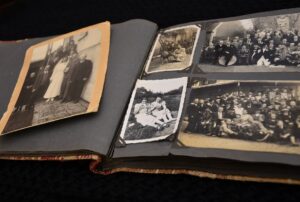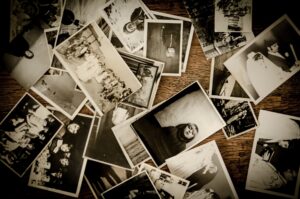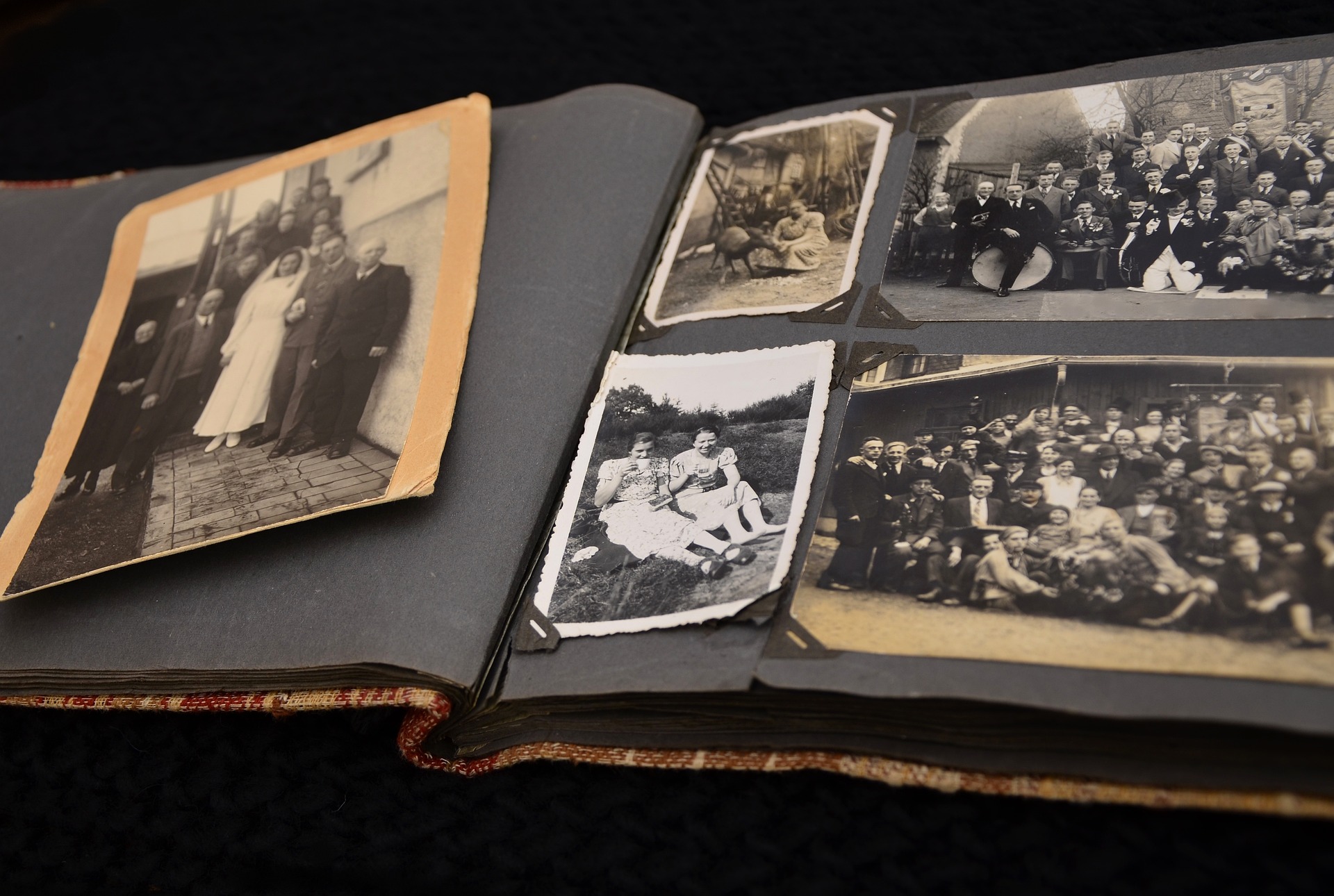The Challenge of Organizing Family History
Like many people, organizing family history is proving to be a challenge. My father recently passed way and my sister and I are now sorting through generations of material. There are photographs, 8 mm film, VHS tapes and documents galore. We are attempting to identify people and are struggling with how to preserve information. We fret over loosing something that we didn’t know was relevant and we wonder what we might have missed that would honour our ancestors. Meanwhile we are challenged to empty a storage unit that none of us want to pay for anymore.
Sound familiar? Is organizing the family history a challenge in your family?
Organizing Family History – The Book
My great grandfather is affectionately known in our family as JY. It stands for John Young Caldwell although we never call him that. Once upon a time, JY and his brothers determined that there was evidence of a family fortune in far away lands. They made an attempt to find the fortune. The brothers conducted meetings, kept minutes, contributed funds, hired lawyers in Ireland and waited for the results. Their activities were beautifully documented in a black, hard cover note book ~ the Book ~ with elegant cursive penmanship. The Book also documented all the family members that were involved.
The Book, surfaced many decades ago and came into my hands for safe keeping. I kept track of it at my parents’ home for years. When I had my own home it was given a special place. Then my father sold the family farm and the family house. There was a storage unit involved. Shortly after I moved. When we unpacked I realized I couldn’t find JY’s Book. I was devastated that the Book may have been lost and all the beautiful and important history it contained.
Organizing Family History – Establish Guidelines
When my sister and I realized the magnitude of the task we faced, we realized we were going to have to make key decisions along the way. We created some guidelines to help establish our priorities and help with repetitive decisions. Your priorities may be different than ours and therefore your guidelines could look quite different. Here are the ones we are using.
- End Goal: have as much material as possible scanned, digitized and converted into a book that can be given to family members.
- Discard photographs of landscapes that don’t appear to be significant.
- Focus on people and their accomplishments and only places as they are relevant. An example might be to locate where a family was living in order to track their immigration to Canada (where we live) or migration across Canada.
- Scan as many documents as possible. Almost all documents had already been removed from frames. Digitized documents (and photos) can also be uploaded into the Ancestry.ca platform as well as online book creation platforms.
- Store family archival material all in one place. My sister and I have both created boxes to store things in our homes so that when items are found or sorted, they can immediately be relocated to this home. Having a home for items helps to prevent them from becoming clutter and makes them easier to find. This strategy also follows the basic organizing principle to keep like items together.
Organizing Family History – The Photographs
The Book did eventually show up as my sister and I fastidiously worked through clearing the storage unit. By now, life and family history had moved online and I had enlisted my ancestry.ca account to help with preserving information.
The family had kept dozens of photos in frames. We made the decision to scan the photos and discard the originals unless any family member wanted them. Scanning with our home based printer/scanners, in the frames, proved almost impossible for the larger photos. We identified that Staples, a North American office and computer supply company, had the facilities to scan oversized photos and documents. We still have outstanding questions such as cost, time and whether the photos have to be removed from the frames and if they could be damaged in the process.
Then there are the photo albums. We sorted older photos and took out landscapes that couldn’t be identified or weren’t interesting. We decided that we were interested in people more than places. Also, we will sort by date. Some people prefer to sort by person, subject or location. Most important is how to preserve the relevance of the photo to your family. For us, chronologically made sense. Still, some photos were in albums and may be damaged if they were removed. And finally, we found negatives of photos for which we haven’t found positives. A quick review proved the subject was worth keeping. A call to a specialty shop Digital Treasures confirmed they could likely print.
Organizing Family History – Managing the Volume
Organizing is about making timely decisions and developing habits that avoid clutter and unnecessary accumulation. As we wade through boxes and bins, the volume of material is almost overwhelming. In fact, the biggest challenge my sister and I are facing is how to manage the volume of material in a way that future generations can enjoy it without having to store it.
Organizing family history is a real challenge. It can be fun but it can also be overwhelming and daunting. Having some guidelines to start can help with decision making along the way.



Carolyn, I am very sorry for your loss, and thank you for sharing your strategies. They will be helpful as I try to organize my own family history and photos.
Thank you Janet. The photo sorting is indeed a real process. Even those of use “trained and experienced” in sorting are finding it a challenge. At the same time, we are enjoying the journey through history and revisiting some special times, places, people and moments. I hope you find the same.